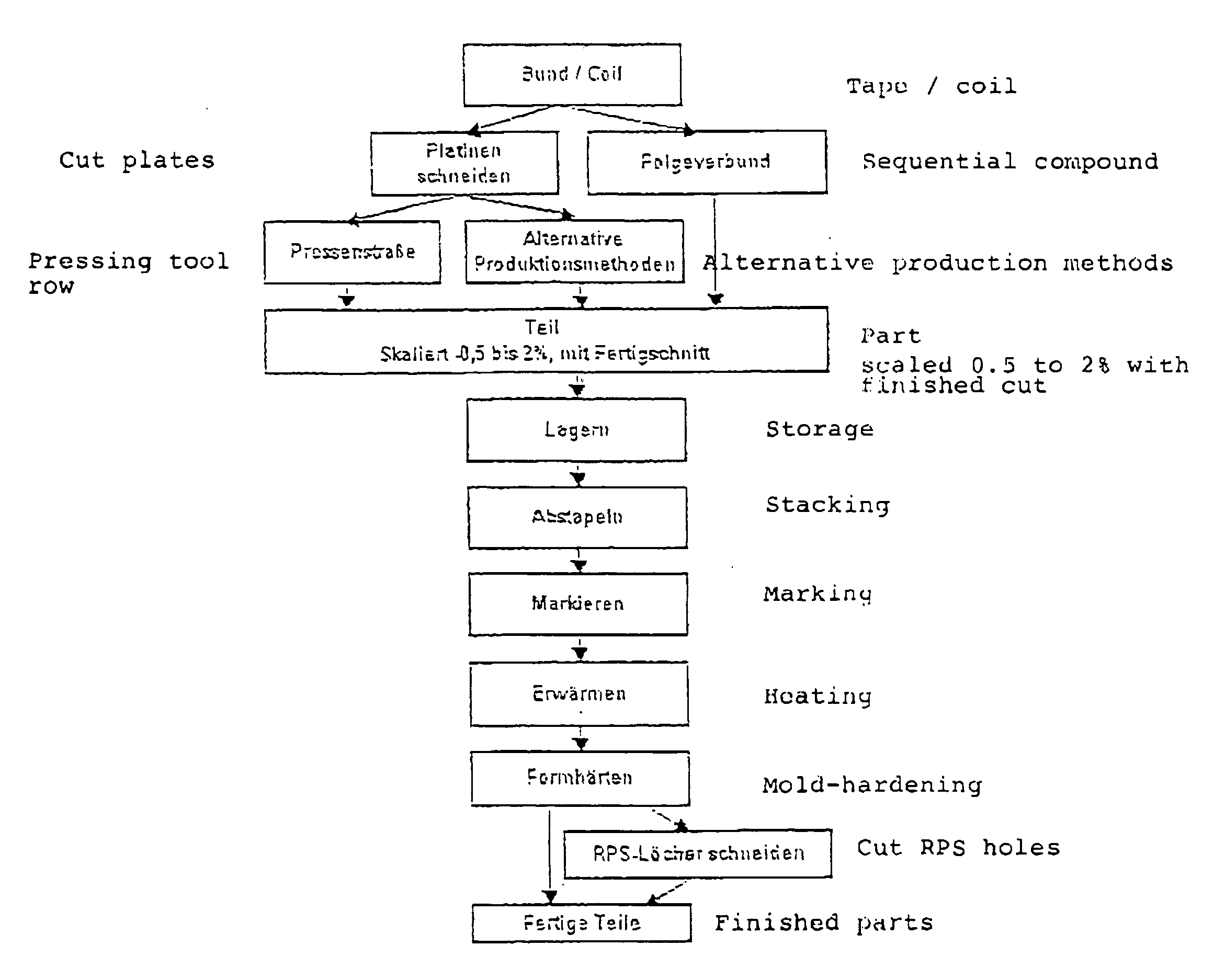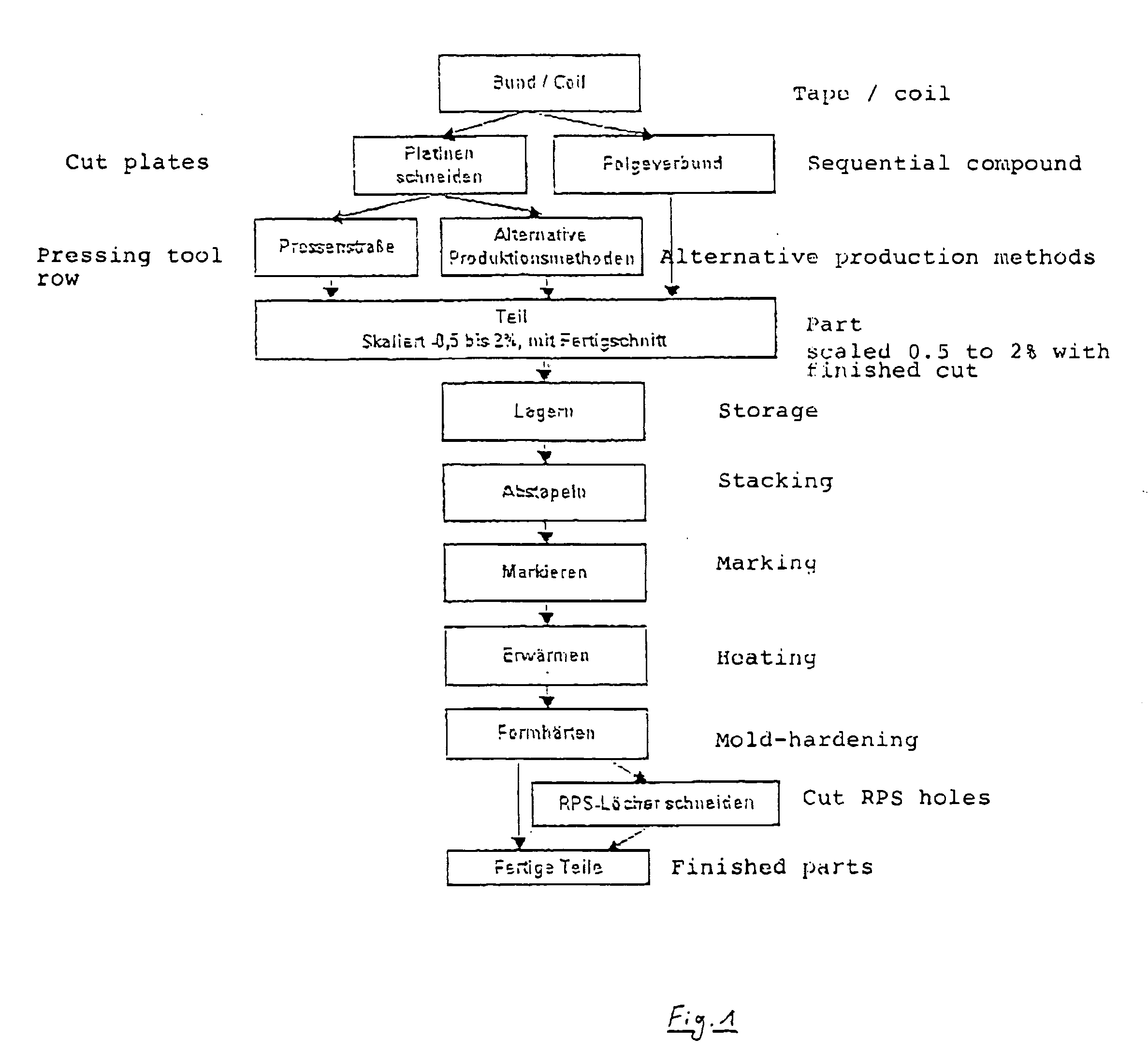Method for producing hardened parts from sheet steel
a technology sheet steel, which is applied in the direction of metal rolling stands, metal-working apparatuses, metallic material coating processes, etc., can solve the problems of warping of structural parts, inability to make available cost-effectively in such large ranges, and the finishing of hardened structural parts is very elaborate, so as to prevent rapid cooling, martensitic, and fast insertion
- Summary
- Abstract
- Description
- Claims
- Application Information
AI Technical Summary
Benefits of technology
Problems solved by technology
Method used
Image
Examples
Embodiment Construction
[0045] For executing the method, the unhardened, zinc-coated special thin sheet is first cut into plates.
[0046] The processed plates can be rectangular, trapezoidal or shaped plates. Any of the known cutting processes can be employed for cutting the plates. Preferably those cutting processes are employed which do not introduce heat into the sheet metal during cutting.
[0047] Subsequently, shaped parts are produced from the trimmed plates by means of cold-forming tools. This production of shaped parts includes all methods and / or processes capable of producing these shaped parts. For example, the following methods and / or processes are suitable:
[0048] Sequential compound tools,
[0049] Individual tools in linkage,
[0050] Stepped sequential tools,
[0051] Hydraulic press line,
[0052] Mechanical press line,
[0053] Explosive shaping, electromagnetic shaping, tube
[0054] hydraulic shaping, plate hydraulic shaping,
[0055] and all cold shaping processes.
[0056] After shaping, and in particul...
PUM
| Property | Measurement | Unit |
|---|---|---|
| thickness | aaaaa | aaaaa |
| temperature | aaaaa | aaaaa |
| temperature | aaaaa | aaaaa |
Abstract
Description
Claims
Application Information
 Login to View More
Login to View More - R&D
- Intellectual Property
- Life Sciences
- Materials
- Tech Scout
- Unparalleled Data Quality
- Higher Quality Content
- 60% Fewer Hallucinations
Browse by: Latest US Patents, China's latest patents, Technical Efficacy Thesaurus, Application Domain, Technology Topic, Popular Technical Reports.
© 2025 PatSnap. All rights reserved.Legal|Privacy policy|Modern Slavery Act Transparency Statement|Sitemap|About US| Contact US: help@patsnap.com


